

SEE Oswald's "Security Clearance" Below
ALSO>>> http://whokilledjfk.net/lt%20DONOVAN.htm
ARRB
ASSASSINATION RECORDS REVIEW BOARD
RFK ON the WCR (From ARRB Report)

After 5 separate Investigations into the JFK Assassination
Warren Report
Rockefeller Report
Pike Report
Church Report
HSCA Report
The American thirst for Truth was still not satisfied
Over 90% of the American people did NOT accept the Lone Nut Theory.
Oliver Stone's movie "JFK" caused such a Furor that it resulted in President George W. Bush being forced to order one more Panel.
It was called "The Assassination Records Review Board".
The ARRB managed to get SOME documents released but, NOT ALL.
The report goes on to tell us how the Intelligence Agencies "Stonewalled" they're efforts to uncover all the facts in the crime of the century.
When a Liaison between the HSCA and the CIA was needed the CIA designated ??? Joandides without telling the HSCA that Joandides was actually the agent in charge of the Mexico City Station that Spied on the Russian/Cuban Embassies/Consulates.
Because the autopsy photos were SO controversial and Secret the HSCA needed Security to insure their safety.
The CIA provided that Security by assigning Roger Blahut.
When it was discovered that the photos were left OUT of the Safe they found Blahut's fingerprints on them.
Following are 2 graphics.
1. Percentage of info asked of several agencies. 
2. Percentage of info received from each agency.

JFK'S WOUNDS AS PER ARRB.
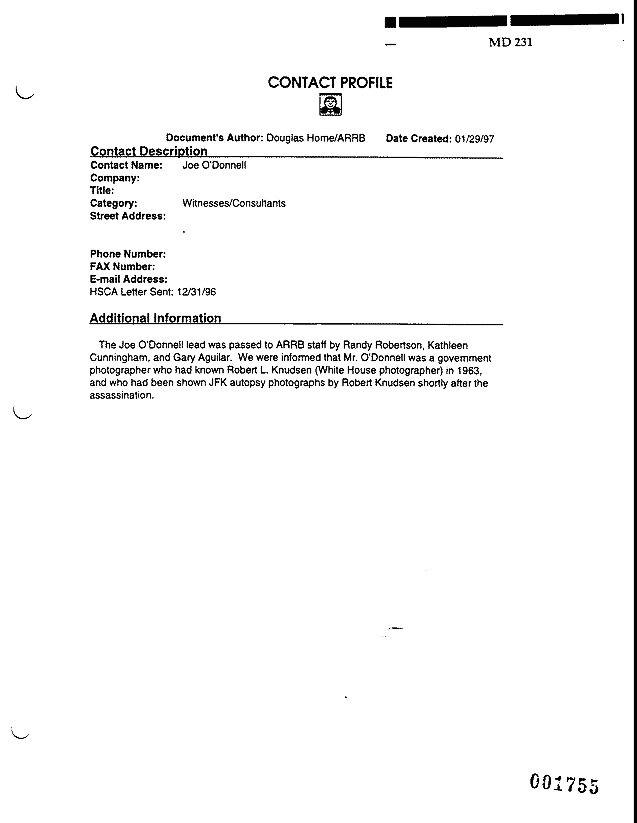
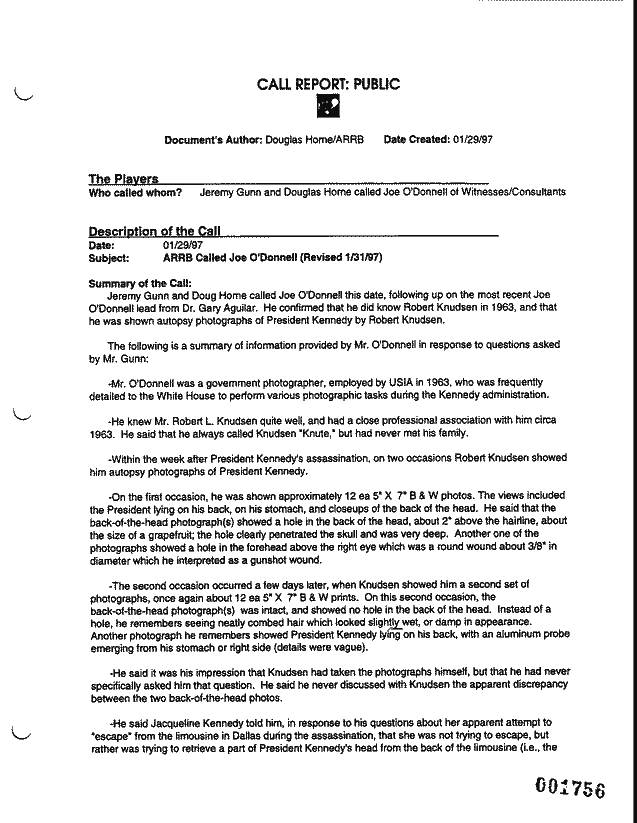
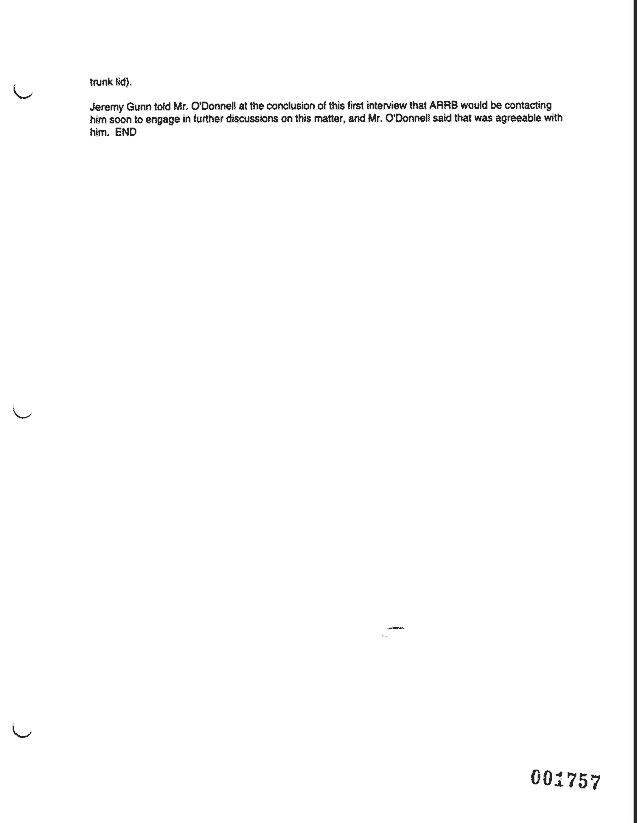
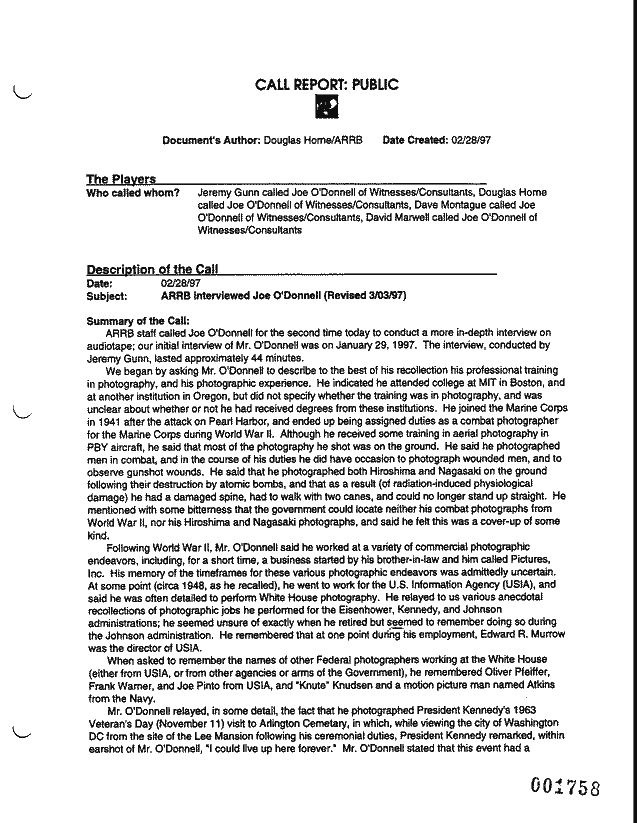
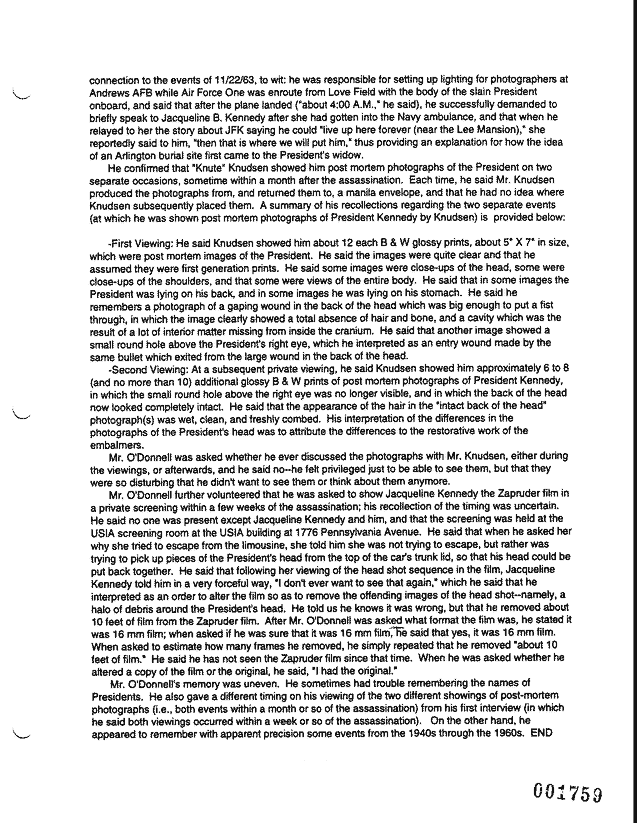
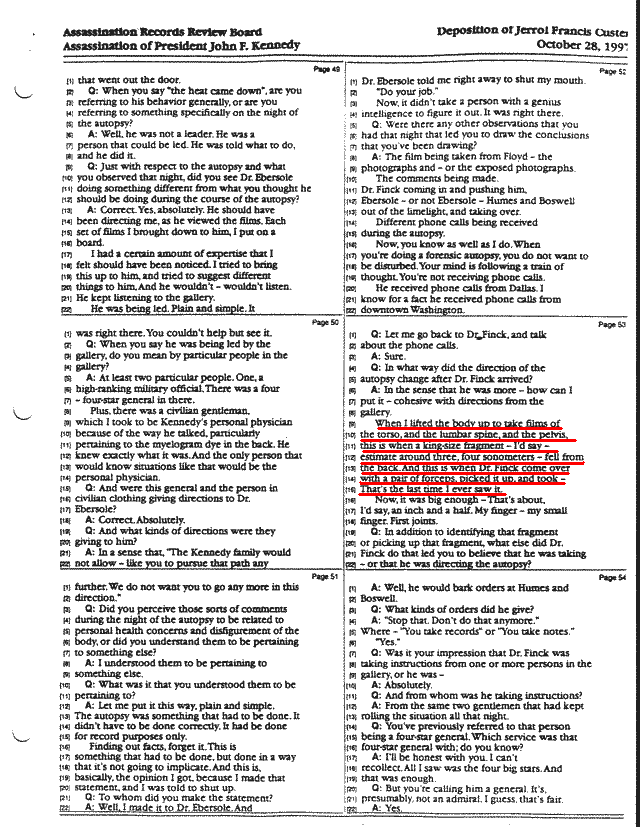

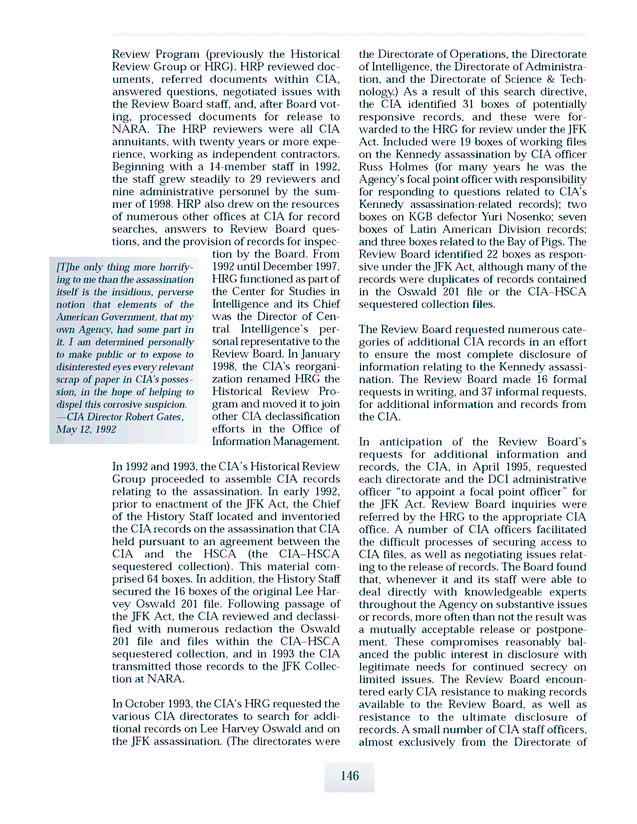
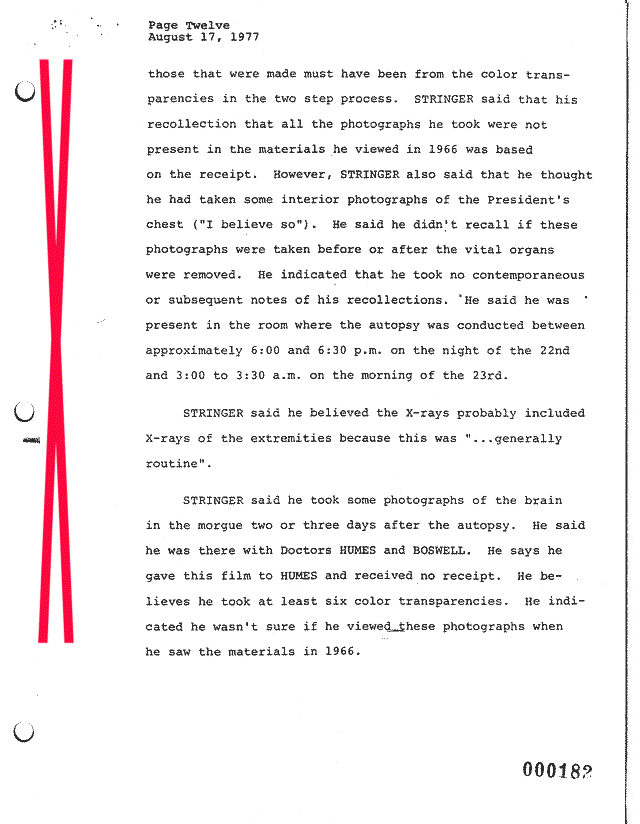
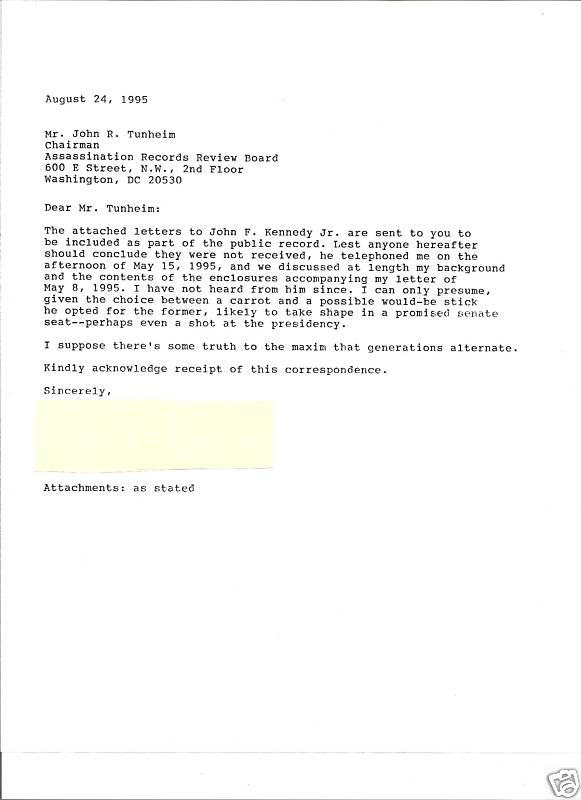
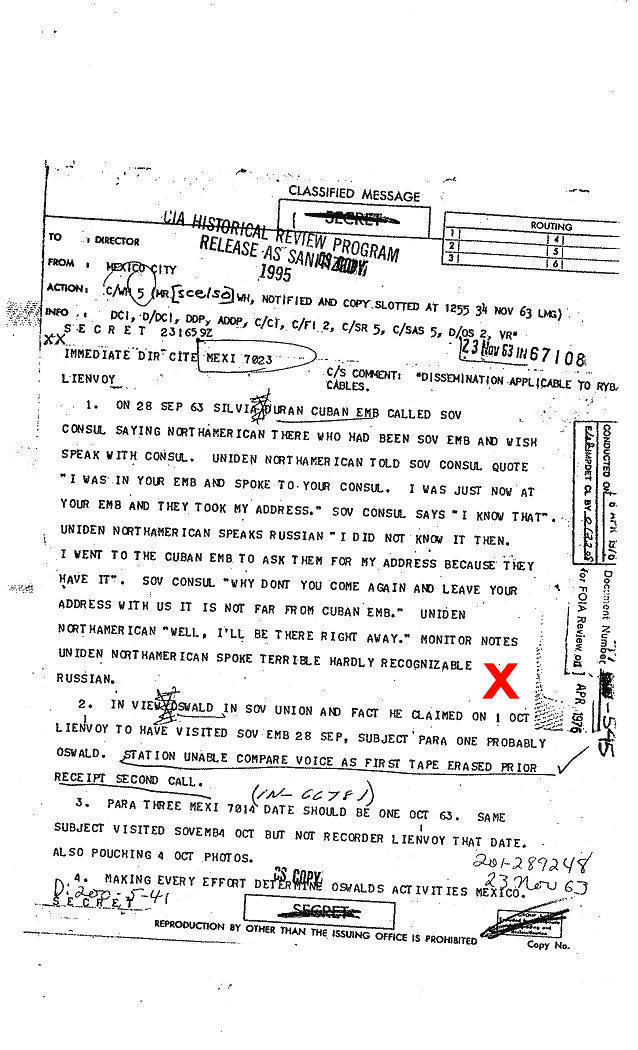
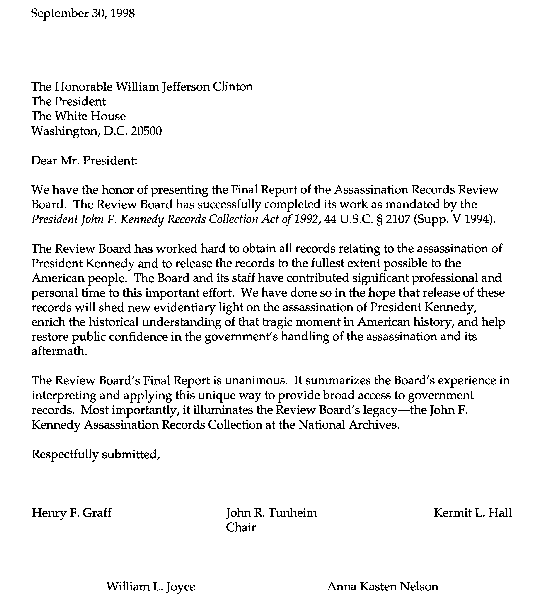
Oswald's Security Clearance
Testimony of Roy
Schaeffer
MR. SCHAEFFER:
My name is Roy Schaeffer and I am a private citizen, and I never met Hal Verb,
but I am --
CHAIRMAN
TUNHEIM: Could you spell your name for the record?
MR.
SCHAEFFER: Okay, it is S-c-h-a-e-f-f-e-r.
CHAIRMAN
TUNHEIM: Thank you.
MR.
SCHAEFFER: I am the person Hal Verb mentioned, I am the person who replaced
Oswald after
he left
Basically,
what I would like to mention is, I am a private probably an assassination buff
more or less. In 1986,
I contacted Jim Garrison, and before he died he had sent --
well, when he got the Zapruder film down at the
trial on '66, he ran off 100
copies. Sometime in 1989, you know, I received a copy from him, and then I have
been researching using a copy of the 100 that was made.
Now
what I had found then at first, you know, I am interested in this flawed editing
of the Zapruder film, and I
wondered, Zapruder said that he had set his camera
on a film speed of 24, and so over the years it got me
thinking. In 1963, I
worked for the Dayton Daily News, and Hess & Eisenhart was the company that
rebuilt the
Presidential Limousine, so I had gone down there with a fellow
reporter because I had like a scientific
background.
Okay,
so anyway what was unique about that time was the emergency lights on the
Presidential car.
Now the lights were interesting in one aspect, they blinked,
they would blink on one side and then on the other.
So one problem I had in --
so I know there was a constant blink rate. Now, I have taken a lot of eight
millimeter
film. In other words, if something has a constant blink rate and you
are photographing it through, like Zapruder,
that Bell & Howell camera, then
it would show a constant rate.
In
other words, if it found that the blink rate was .41 seconds, so it would show a
rate of nine blinks in the film.
Now what I had submitted, I believe you have
that record I gave to Mr. Gunn, I plotted from 133 to 238, and the
pattern does
not show up that way. So I am suggesting, you know, to yourselves that that
proves that alterations
was done to the Zapruder film.
Also
on the night of the assassination, what I believe, the film -- in other
words, Zapruder took the film to the
Kodak lab in
From
my information on the Max B. Phillips minimal, I think Paul Halp talked about
that on Commission
Exhibit 450, that it shows that the Zapruder film, and I
believe three copies were flown to
DR.
HALL: You were saying only the Dallas Eastman-Kodak lab.
MR.
SCHAEFFER: Okay. So anyway, it is a very complicated process, and it takes about
45 seconds, so it is called the K-14 but the 14K process because it is what they
call a subtractive process. It is a reversal film that like comes into a color
transparency after it is developed. So, in other words, I believe that they took
the original film to the National Interpretation Lab and at that point they
altered it down to
approximately 18 frames per second. Like I say, in 1960 --
so what I am saying is that I believe Frame Z-133 to 238 is where they altered
that.
Now
the way I found that out was, I personally had the film and I went through and I
plotted each blinking light per frame, and that is how I derived that the film
was altered. Unless you have the actual film, you can't -- there is no way
you can determine that.
So
that is pretty much what I had to say. I thank you for your time.
CHAIRMAN
TUNHEIM: Any questions for Mr. Schaeffer?
DR.
NELSON: I have one. You say you replaced Oswald, that is to say you took over
all of his functions, his job?
MR.
SCHAEFFER: That's correct.
DR.
NELSON: Which were? What was the job assignment?
MR.
SCHAEFFER: We worked at TACC, Tactical Air Control Center, basically, and it was
basically tracking IFF boxes. In other words Strategic Air Command, and then
they had like IFF boxes. And then they would set those in the morning, and then
your crypt orders would come down from Washington
and they were like Zulu Time Rated, 24-hour time, and then there was what you
call authentifications. So
that is what a person that has crypt does.
So
our job was, when the planes left the United States through the EDACs area was
to clear them
and plot them, and so that was basically what our job function was
there at El Toro, and I am sure
Oswald did the same thing.
MR.
MARWELL: Mr. Chairman, in fact, Mr. Smith had signed up earlier.
CHAIRMAN
TUNHEIM: Thank you, Mr. Schaeffer, we appreciate your help.
MR. SCHAEFFER: Thank You.
| From the November-December, 1995 issue (Vol. 3 No. 1) |
Classified until 2017?
When the ARRB sent out the results of its closed October 24th meeting, many, including us, were taken aback by the fact that in the first review of HSCA documents, the overwhelming majority were being postponed by the Board for a 2017 release. Many jumped to the conclusion that, like the Warren Commission and House Select Committee, the Review Board had reneged on its statutory promise.
The day after
We think that is a fair request and are relieved that there is nothing sinister about the HSCA redactions. Many researchers, especially us, are eager to see what the HSCA held back. And the sooner—and more completely—that hidden record is revealed, the better it will be for all of us.
1. Saundra Spencer of the Naval Photographic Center told the
ARRB that
she developed autopsy photographs that are not in the extant
collection.She did not recognize any of the current ones available. Not
only that, she showed the printing paper that was used which is
different. Also, she said she saw a brain photographed next to JFK in
one shot, & the wound in the throat was a circular thumb sized wound
that doesn't correspond to the big messy throat wound in the current
pictures. And she saw a hole clearly in the back of the head matching
some 40 other witnesses. To believe the offical fairytale Spencer who
was very sure of her observations would have to have been wrong on at
least 5 different points...what are the odds? Seems to me anybody that
has any curiosity left,even if they were 80% LHO acted alone which,
certainly is not a 100%hardcore lone nutter that infests these boards,
would be mighty interested in what Spencer says.
2.Douglas Horne meticulously recounts the evidence for a 2 brain exam
shell game. The evidence for a substitute brain that doesn't match the
official Ida Dox tracings.Too much to go into, or remember precisely,
but You can google it
3. I would say the sum revelations about Mac Wallace the fingerprint
issue, which gets into LBJ and the owner D.H. Byrd. That was made
available to the ARRB.

Home | All Articles | Action Alerts | About CTKA
![]()
![]()
Page Visited
Times

